Thanks to Chloe for this great report on her recent trip to the Big Island.
 |
| Chloe Skidmore in her element |
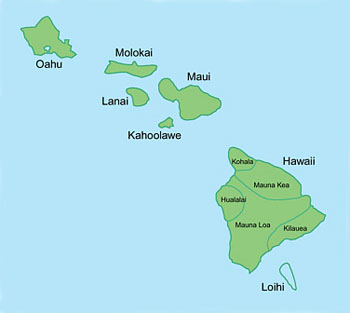
Kilauea, Mauna Loa, Mauna Kea and the other well-known Hawaiian volcanoes are just a few of many on the Hawaiian-Emperor Seamount chain. All this volcanism is the result of a volcanic hotspot – an upwelling of hot magma that is lurking beneath the Pacific Plate. The volcanic chain also continues underwater showing that the future, it terms of volcanism, is bright. Loihi, a seamount or underwater volcano, is growing on the ocean floor southeast of the Big Island and lies about 3,000 feet below sea level. Wait a few million years and you might be able to vacation here too.
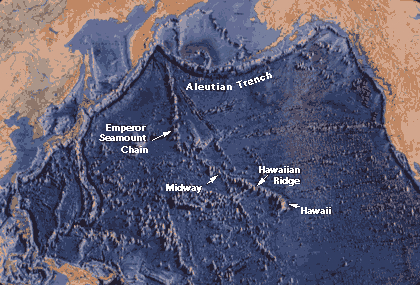
In some circles, bends in volcanic hotspot lineaments are thought to directly record changes in plate motion (Sharp and Clague, 2006). These authors claim the bend in the Emperor/Hawaii chain (which occurred about 50 million years ago) happened at the same time as the realignment of Pacific ocean rifts, eariest magmatism in western Pacific arcs, and possibly due in part to the Indo-Asian collision. Their conclusions are consistent with the formation of the bend by changed Pacific plate motion (i.e. what every first-year geology textbook teaches). However, there is another group of scientists that disagree. Tarduno et al. (2009) claim several lines of geophysical inquiry suggest that the bend in the Emperor-Hawaii hotspot track was induced by “mantle wind”. Their modeling suggests that although mantle flow near the core-mantle boundary may have played a role in the Hawaiian-Emperor bend, the sub-Pacific mantle flow can better explain the kink in the hotspot track.
For being such small islands (the Big Island is 4,028 sq. miles), the Hawaiian islands are incredibly diverse – part jungle, part semiarid desert, part grassy plain, and part (what I imagine looks like a) Martian landscape. Hawaii’s not famous among geologists for its nice waves and sandy beaches but for being home to the world’s most active volcano and for being a clue to the nature of plate motion. Kilauea, located on the eastern side of the big island, wins the award for being the world’s most active volcano by producing massive amounts of basalt that have flowed east towards the ocean, clearing everything in their path. For example:
 |
|
A van that was in the wrong place at the wrong time. This is a flow from 2011.
|
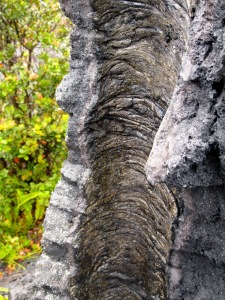 |
More manifestation that lava cools quickly when it touches another surface.
Lava cools rapidly when encountering trees. The tree dies but leaves behind molds like this one. |
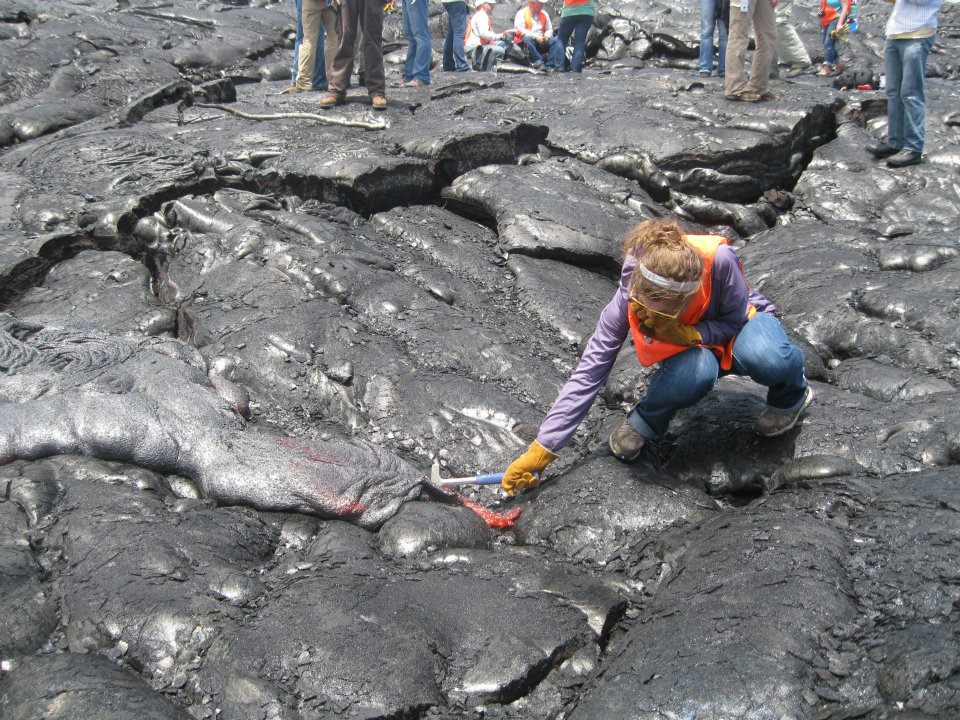 |
| Sampling some lava for my very own |
There are two types of basaltic lava – a’a and pahoehoe. A’a is jagged and blocky while pahoehoe is smooth, ropy, and looks like squeezed-out toothpaste. These differences are the result of varying temperatures or terrain on which the lava flows. The hotter the lava, the less viscous and therefore the more likely it is to be smooth and flowing (pahoehoe). If lava travels on a steep slope it is more likely to be a’a since the rate of flow often exceeds the strain rate of the lava causing it to break and crack.
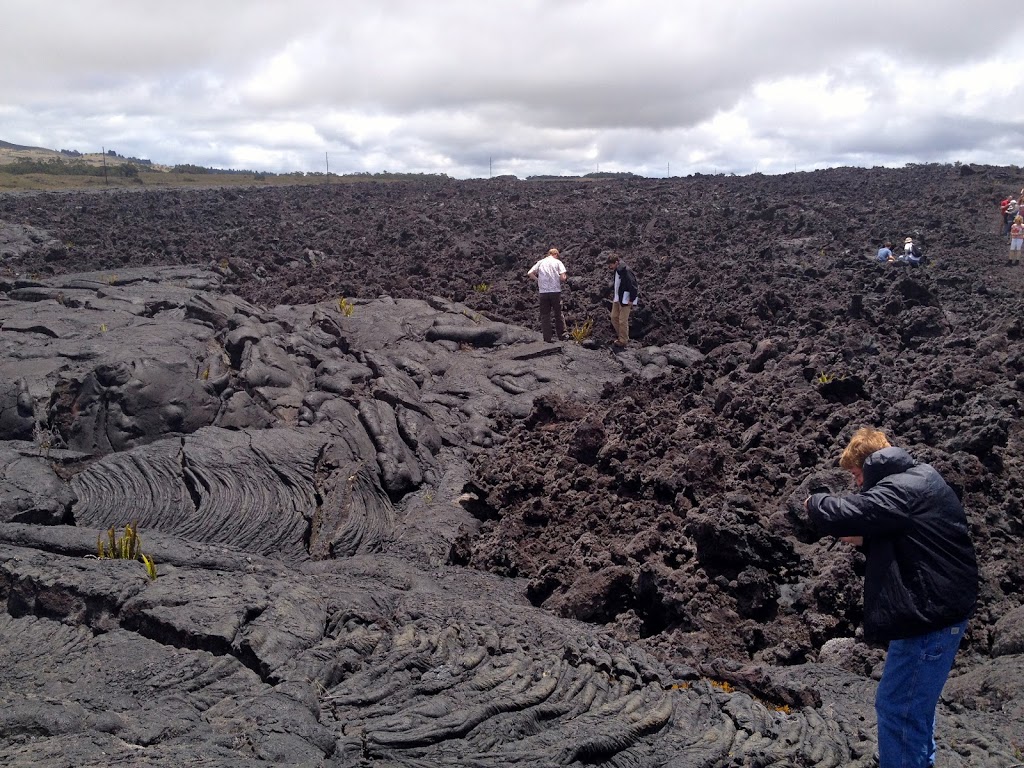 |
| Pahoehoe (left) and Aa (right) Basalt Flows from Mauna Kea in the 1970’s |
Kilauea is technically one volcano, but it erupts from different vents that are all part of the same plumbing system. Halemaumau is one of these vents; it is a lava lake located in Hawaii Volcanoes National Park. A lava lake is exactly what it sounds like – a pool of lava, often within a crater, bubbling over the source that created it. The most imminent threat from Halemaumau is the toxic sulfur gases it emits, which have killed plant life down wind and caused part of the park to remain closed for the past several years.
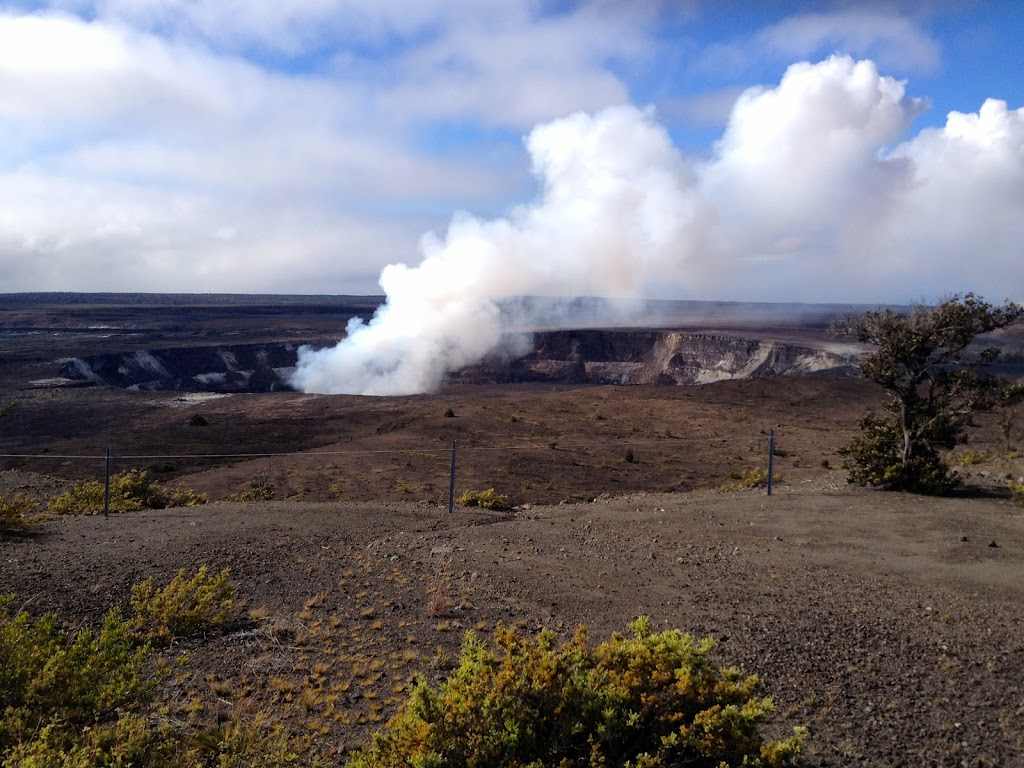 |
| Halema’uma’u Crater by day |
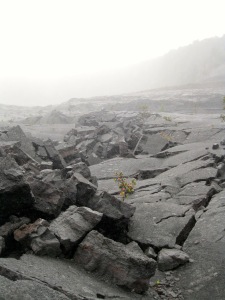 |
This is Kilauea Iki, an ancient lava lake only a few miles from Halema’uma’u that began cooling inthe 1950’s.
The swells in the terrane are evidence of inflation and deflation within the lava lake. |
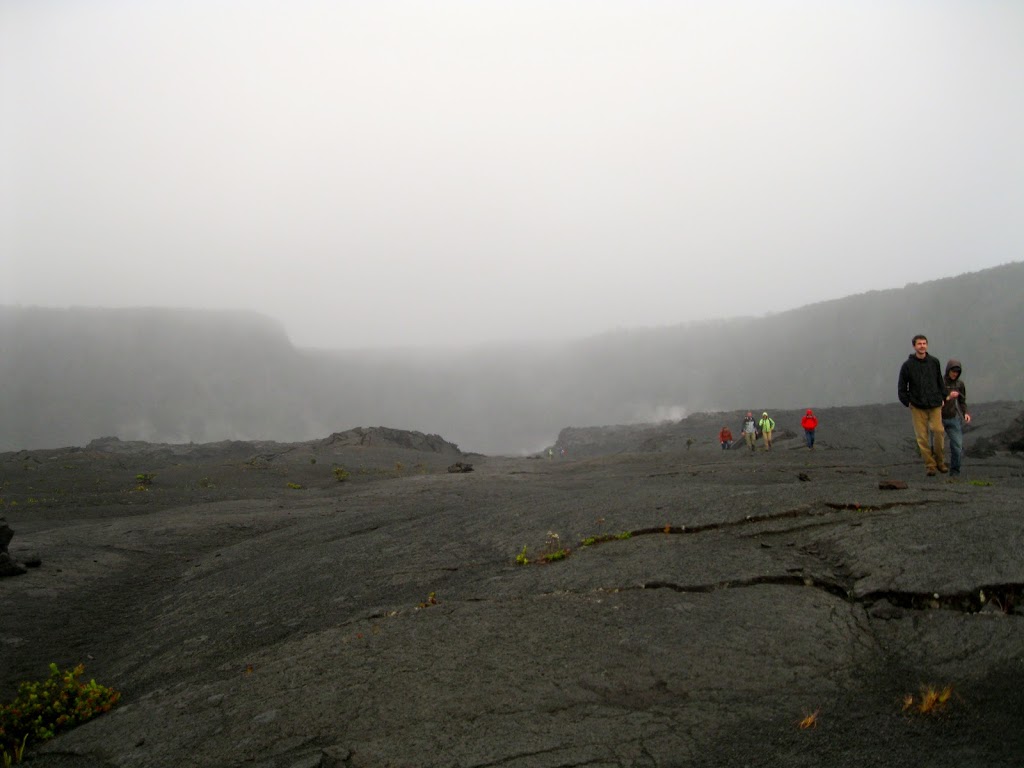 |
| Another shot of Kilauea Iki |
Pu’u O’o is the other prominent vent that is erupting today. The molten rock from Pu’u O’o makes its way towards the ocean via a lava tube. Lava cools fastest when it is exposed to air or touches another surface. Thus when hot basaltic lava erupts from a volcano it hardens on the top, bottom, and edges first. The middle of the flow can stay molten and continue flowing, basically creating a channel for more magma to travel through. To get the best views of Pu’u O’o you must get up high. So we decided to take a helicopter.
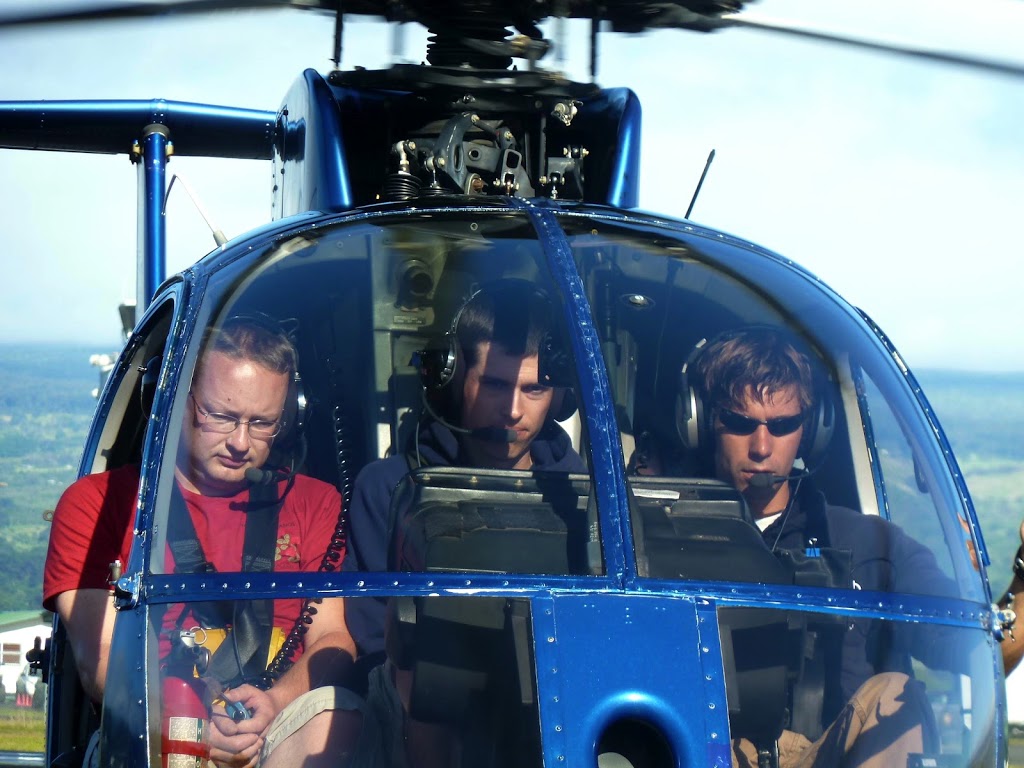 |
Don and Richard preparing for lava flyover
photo by J. Radebaugh |
|
 |
Smoke from a trail of lava tubes. The cone of Pu’u O’o is located on the right.
These lava tubes are directing the flow towards the ocean on the left. |
|
 |
| A live view of Halemaʻumaʻu Crater |







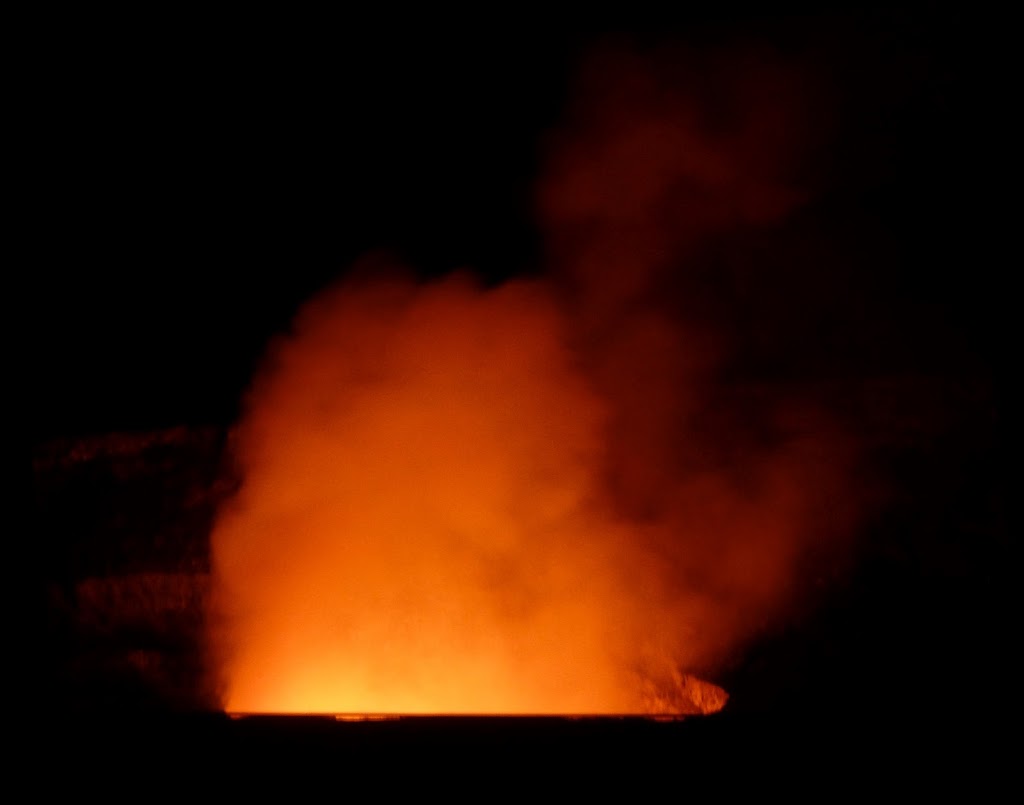




![]() This work is licensed under a Creative Commons Attribution-NonCommercial-ShareAlike 4.0 International License.
This work is licensed under a Creative Commons Attribution-NonCommercial-ShareAlike 4.0 International License.


